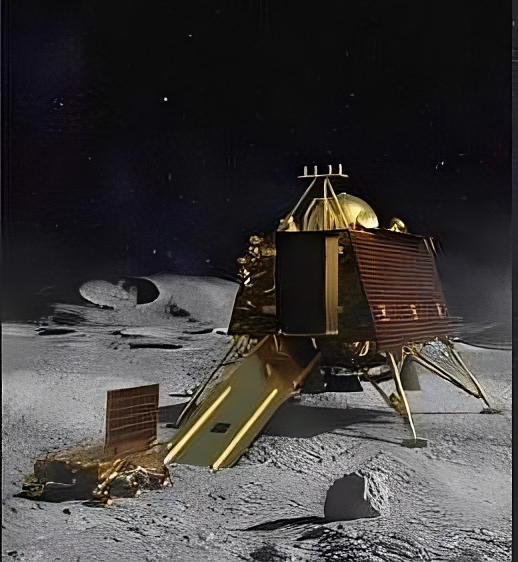A little after 6 pm India time on August 23rd, 2023, India became the fourth country ever to achieve a soft landing on the lunar surface, and the first country to land on the moon’s South Pole. The other three countries are US, Russia, and China.
In 2014, India was also the fourth country to successfully place a Mars craft in orbit (around Mars). The other three countries with this achievement were US, Russia, and the European Union. (Today, UAE and China have been added to the list and China has also become the second country ever to land a rover on the Martian surface).
Chandrayaan III, equipped with the Vikram lander and the Pragyaan rover, is the successor of the Chandrayaan II program of 2019. At that time, the orbitor had reached the moon’s orbit successfully and the landing was started, but contact was lost with the lander shortly afterwards. Later, NASA confirmed that the lander had crashed into the lunar surface.
This time, ISRO learnt from its previous experience and made changes to the lander, such that it was able to identify a safe landing spot on its own (Lander Hazard Detection and Avoidance Camera (LHDAC)), communicate with Chandrayaan II, and also charge its batteries on its own.

Why is the South Pole of the moon so important?
The south pole of the moon is an important area because this is where water was discovered (by a NASA instrument on board Chandrayaan 2).
Since it is on the far side of the moon, sunlight does not reach that area.
Also, it is a harder area to land on. Previous missions have landed near the equator of the moon. Only the Chinese Chang’e 4 landed close to the South pole before this, and even there, the Change’e 5 was moved towards the equator.
Milestones of the Chandrayaan III journey
Take off: July 14, 2023.
Leaving the Earth’s orbit: August 1
Entering the Moon’s orbit: August 5
The Vikram lander separating from Chandrayaan: August 17
Vikram lander achieving soft landing on the lunar south pole: August 23
Deployment of the Pragyaan rover from the Lander: August 23, 2023.
Next step: The rover will remain on moon for one lunar day (about 14 earth days) and conduct research.
By the way, if you want to explore the lunar surface, check out NASA’s moon trek. It helps us see the moon really up close, and just for fun, I also calculated the distance between the Chinese Chang’e 5 craft and India’s Chandrayaan 2 craft.
A visual journey
The entire touchdown was live telecast internationally. As the mission completed its maneuvers successfully, the ISRO team could be heard applauding at each stage.
Finally, as the touchdown happened, the applause turned into a roar. The ISRO Chairperson, Shri S Somnath, came to the dais to announce the success of the mission. He also invited the mission director and other senior leaders of the mission to talk about their contribution and share a few words.
At over 8 million concurrent viewers, this livestream earned a record of its own – the most viewed livestream in recorded history. What makes this notable is that the same stream was available through many channels. Yet, a single livestream recoded 8 million concurrent viewers.
Many companies and individuals shared posts and memes. We bring you a visual journey. It includes the pictures shared by Chandrayaan, and the other interesting posts on our success.
This unverified video is purportedly from NASA, which was helping us with communications and landing. It appears to be genuine.






























One Reply to “India is on the moon! – A visual story”
Comments are closed.